Tucked away in peaceful Parvati Valley lies the mystic destination Manikaran Hot Spring, which draws travellers worldwide. Aged as a geothermal wonder situated in the Kullu district of Himachal Pradesh, it is a tourist spot and a sacred site for both Hindus and Sikhs. the hot spring is known for its healing properties; thus, it has become a must-go place for everyone looking for physical and spiritual refreshments. Situated amongst the beautiful surroundings of green hills and beside the Parvati River, Manikaran Hot Spring offers an amalgamation of natural beauty, religious significance, and therapeutic benefits.
Manikaran Hot Spring Location
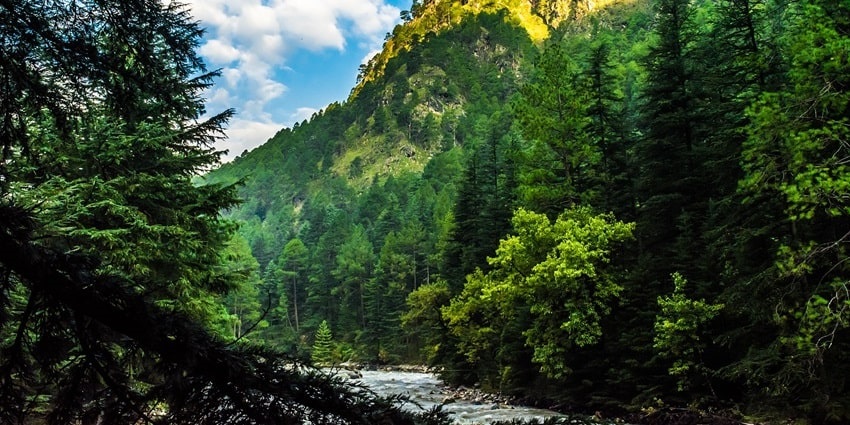
Photo: Alok Kumar / Wikimedia Commons / Image For Represention Only
Manikaran Hot Spring lies in the Parvati Valley of Himachal Pradesh, located about 45 kilometres from the famous hill station of Kullu and around 4 kilometres from Kasol. Based at an altitude of 1,760 meters above sea level, this is a tiny town. Its surroundings of the beautiful Himalayan ranges, and the Parvati River maximise as far as natural beauty is concerned. These hot springs are located inside the Manikaran Sahib Gurudwara complex, the supreme pilgrimage point for Sikhs; it is also quite accessible from the town centre.
Suggested Read: Relax And Rejuvenate At The Famous Vashisht Hot Springs In Himachal
How To Reach Manikaran Hot Spring
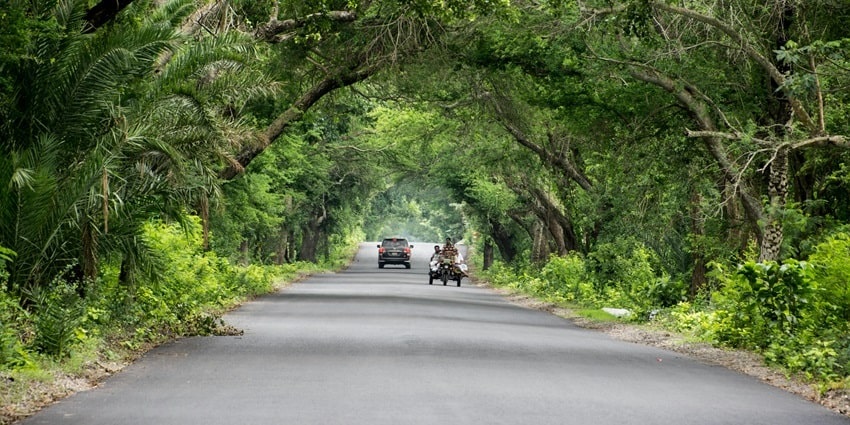
By Air: The closest airport to Manikaran Hot Spring is Bhuntar Airport, also known as Kullu-Manali Airport, which is approximately 35 km away. Bhuntar has a good frequency of flights to major cities like Delhi and Chandigarh. Take a bus or rent a cab to get to Manikaran from the airport. The drive from Bhuntar to Manikaran takes about 1.5-2 hours.
By Bus: Manikaran has a good road network with major cities in Himachal Pradesh and the neighbouring states. Frequent buses from Delhi, Chandigarh, and Kullu are available in Bhuntar, after which you can get to Manikaran, use a local bus, or hail a cab. Private and state-run buses are frequently available, making it easy for the traveller to get to the hot springs. By bus, from Delhi to Manikaran, it takes around 12-14 hours.
By Rail: Joginder Nagar Railway Station is the closest train station, about 145 kilometres away, but it isn’t very well-connected to major cities. A better alternative now is to take a train to Chandigarh or Pathankot, which are about 290 km and 300 km, respectively. You can take a taxi or bus from these stations to reach Manikaran.
Places To Visit In And Around Manikaran Hot Spring
Here are five must-visit places around Manikaran Hot Spring. These places are easy to get by and full of mesmerizing views and adventures.
1. Manikaran Sahib Gurudwara
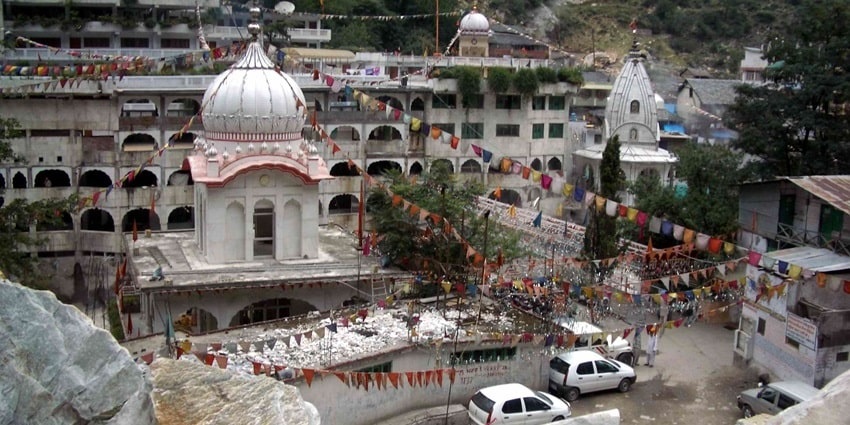
Photo: John Hill / Wikimedia Commons
One of the main attractions around Manikaran Hot Spring is the Manikaran Sahib Gurudwara, a reverently admired pilgrimage centre of Sikhs. It is believed that Guru Nanak Dev Ji, the founder of Sikhism, visited this place himself. The hot springs within the Gurudwara premises have special significance as they prepare food for the langar (community kitchen). Devotees and tourists visit the Gurudwara to relish its serene and spiritual environment.
Timings: 24*7
Entry Fee: Free
Suggested Read: Places To Visit In Manikaran With An In-Depth Travel Guide For An Outstanding Vacation
2. Shiva Temple, Manikaran
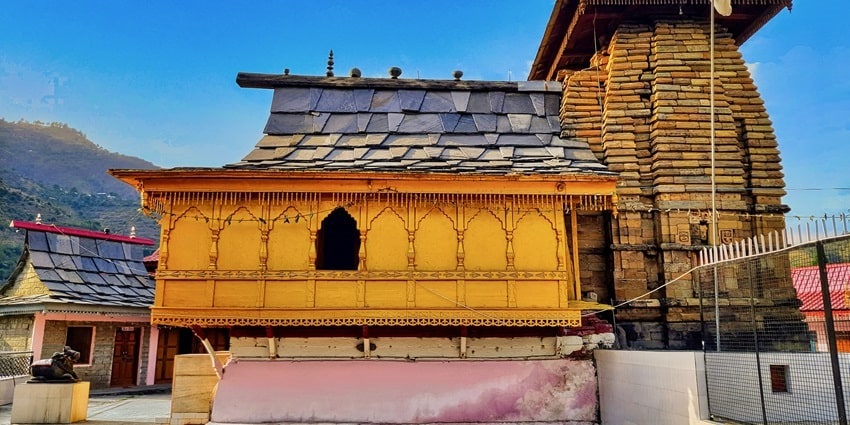
Photo: Ms Sarah Welch / Wikimedia Commons / Image For Representation Only
One such ancient temple dedicated to Lord Shiva is the Shiva Temple in Manikaran, which forms an essential centre for Hindu pilgrims. The temple stands distinct due to geothermal activity that continuously emits steam from the ground, creating a mystique environment. Because of its therapeutic qualities, devotees believe in what lies ahead when they plunge in the holy hot springs close to the temple. It is a temple overlooking the majestic vista of the Himalayas, with a serene atmosphere inside that offers a rendezvous with spirituality.
Timings: 6 AM – 8 PM
Entry Fee: Free
3. Parvati River
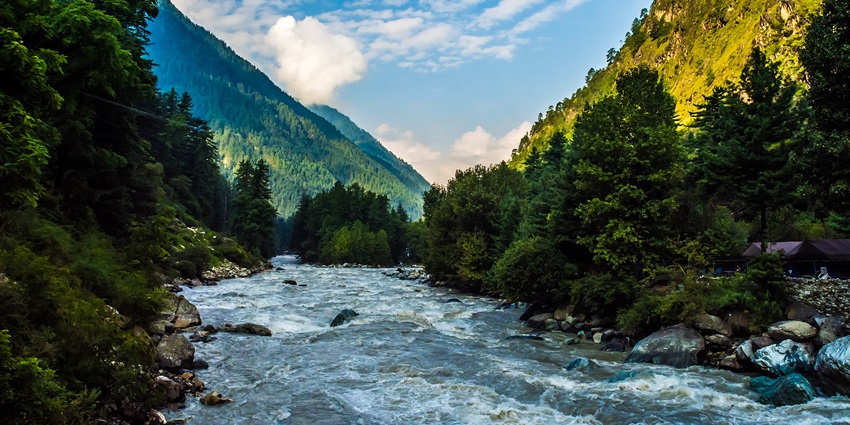
Photo: Alok Kumar / Wikimedia Commons
The Parvati River runs through the centre of Parvati Valley, presenting pictorial views and a tranquil ambience. Being integral to the ecosystem in the valley, the river fringes with greenery on either side, ideal for nature walks, picnics, and photography. The river is an adrenaline-pumping destination during the monsoon when it offers white-water rafting. It’s the perfect spot to unwind and refresh because of the serene sound of the river running beside the stunning vistas of the surrounding mountains.
Timings: 24*7
Entry Fee: Free
Suggested Read: Explore The Amazing Things To Do In Manikaran, Himachal Pradesh
4. Kasol
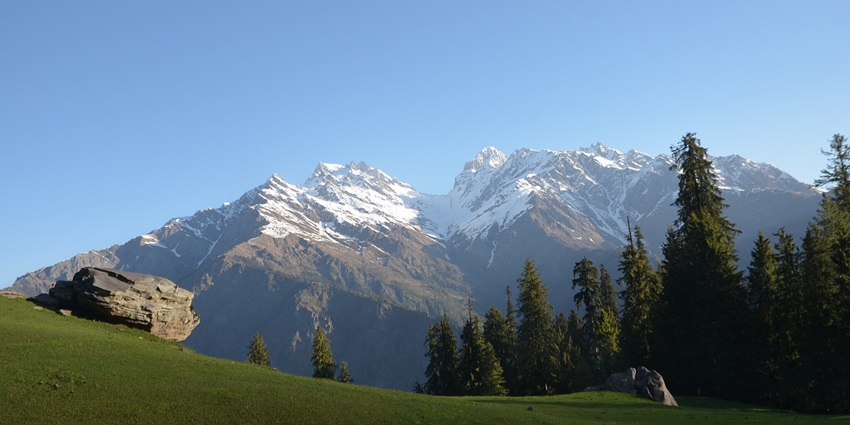
Photo: sagarp7 / Wikimedia Commons
Though 4 km from the Manikaran Hot Spring, Kasol is a beautiful village dubbed as the “Mini Israel” of India because of the large influx of Israelis visiting this place. It is truly a backpacker’s paradise with trekkers and nature enthusiasts amidst the beauty of Parvati Valley, with appealing views, flashy markets, and numerous cafes serving all kinds of cuisines. It acts as the starting point for several hikes, including the famous Kheerganga trek.
Timings: 24*7
Entry Fee: Free
5. Tosh
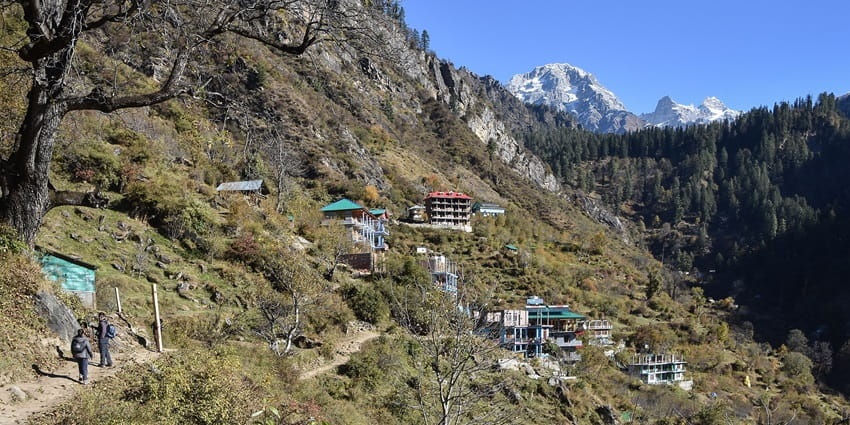
Photo: Timothy A. Gonsalve / Wikimedia Commons
Tosh, perched at an altitude of 2,400 meters, is one picturesque village approximately 20 km from Manikaran. With breathtaking views of the snow-crowned Himalayas and green valley landscapes, Tosh attracts trekkers and people who seek solitude in the presence of nature. It is dotted with traditional houses of wood and stands out for providing several guesthouses and cafes that offer a glimpse of rustic charm and modern comfort facilities.
Timings: 24*7
Entry Fee: Free
Suggested Read: Best Places To Visit In Tosh To Explore The Pristine Nature
Where To Stay
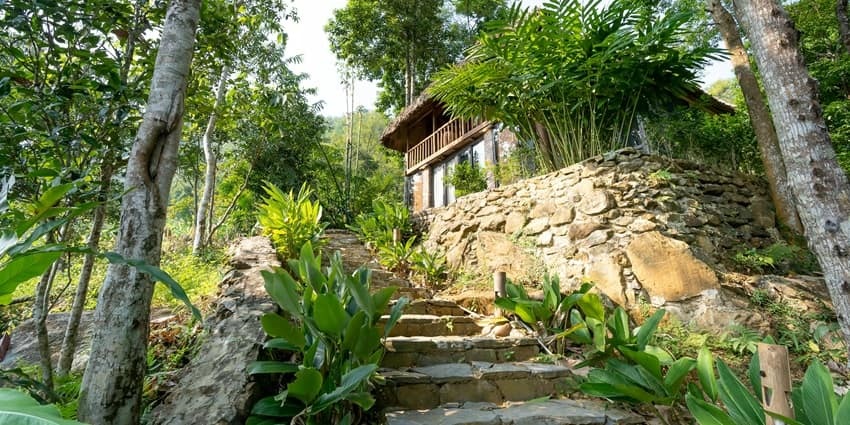
Photo: Quang Nguyen Vinh / Pexels / Image For Representation Only
Ranging from budget guest houses to mid-range hotels, sufficient accommodation options are available around Manikaran Hot Spring. A little distance from the Gurudwara Manikaran Sahib, there are a few guesthouses and small hotels for those who intend to stay closer to the hot springs. These provide simple, clean amenities and comfortable, hassle-free stays for pilgrims and tourists. You may have a night stay at Kasol in more luxurious camps. Many hotels, resorts, and guest houses vary depending on everybody’s budget. Most of the accommodations here offer magnificent views of Parvati Valley and are well-equipped with modern furnishings.
Where To Eat

Photo: Pixabay / Pexels / Image For Representation Only
If it is food that one is looking at, then Manikaran Hot Spring and its surroundings offer a mix of traditional Himachali and a global flavour. Take advantage of the langar at the Manikaran Sahib Gurudwara, which is simple, relishing meals cooked in the hot springs. Besides the langar, ample small eating spots and dhabas in Manikaran serve local specialities like rajma-chawal, siddu, and parathas. Those seeking more options can avail a range of dining options in Kasol, ranging from Israeli cuisine to Indian and Continental.
Suggested Read: Top Places To Visit Near Kasol On Your Next Trip To The Hills
Best Time To Visit Manikaran Hot Spring
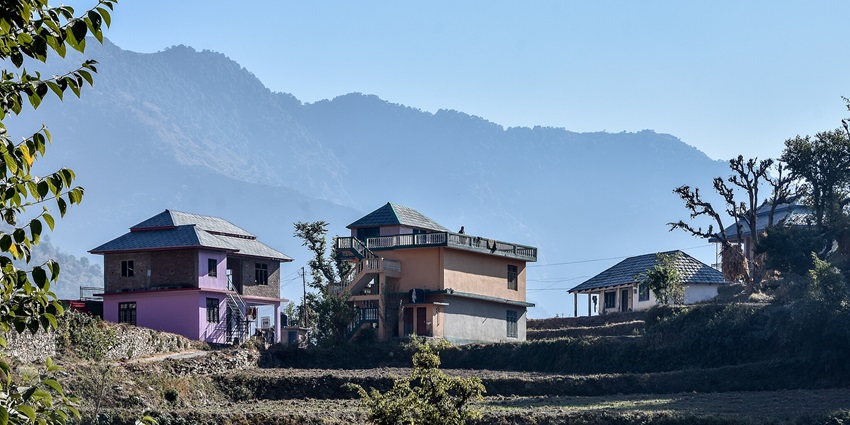
Photo: Timothy A. Gonsalves / Wikimedia Commons / Image For Representation Only
The best time to visit Manikaran Hot Spring is from March to June when the climate remains pleasing and the valley is full of blossoms. During this period, the temperature varies between 10°C and 25°C. The monsoon season, from July to September, brings heavy rain, which causes landslides and blocks the roads, making travelling troublesome. But if you like the lush green and don’t mind the rain, this can be the right time for your visit. The region is less accessible from October to February but offers a unique experience to people who like snow and chilly weather.
Other Factors To Consider
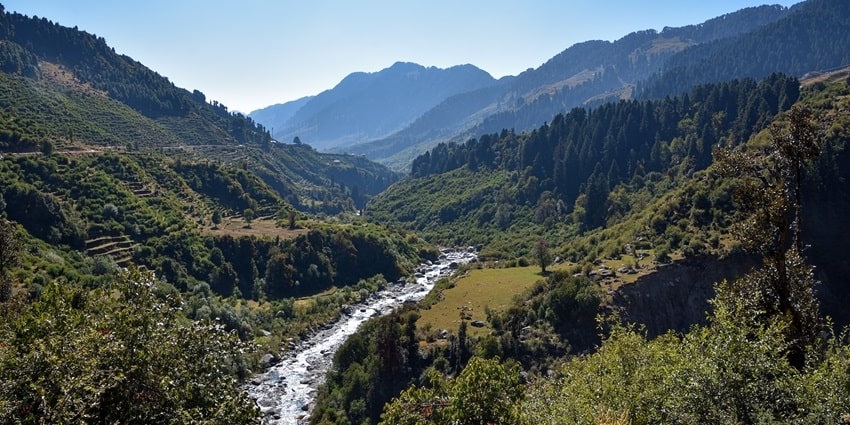
Photo: Timothy A. Gonsalves / Wikimedia Commons
Average Cost Of The Trip
A trip to Manikaran Hot Spring can be pretty economical, mainly if you use public transport and stay at budget accommodations. The best part is that there is no entry fee to Manikaran Hot Spring. The average cost of a 3-day itinerary to Manikaran, covering transportation, lodging, food, and local sightseeing, can be about INR 5000-8000 per person. For those who want more luxury, it could cost about INR 15,000—22,000 per person.
Tips For Travellers
- Even during the summer, the evenings will be cold, so it is desirable to bring warm clothes.
- Manikaran is a religious site for both Hindus and Sikhs; hence, modest attire would do justice to the place and respect their local customs.
- ATMs are scarce in the area, so carrying enough cash for your trip is advisable.
- High altitude can render one dehydrated in no time, so drink plenty of fluids. Also, remember that clicking photos at Manikaran Hot Spring will help you keep your memories fresh.
- Accommodations tend to fill quickly during peak climbing seasons, so booking in advance is best.
Suggested Read: Hill Stations In Himachal Pradesh Where You Can Get Lost In The Mountains
Manikaran Hot Spring is an emancipation of nature, spiritually significant, and medicinally beneficial. Be it the adventurer, the relaxation lover, or even the spiritual soul searching for a spiritual experience, this unique place has everything to offer. So what are you waiting for? Go ahead and plan your trip with TripXL to experience the mystic charm of Manikaran Hot Spring.
Cover Photo: Don Barron / Pexels / Image For Representation Only


 WhatsApp
WhatsApp
 Twitter
Twitter









